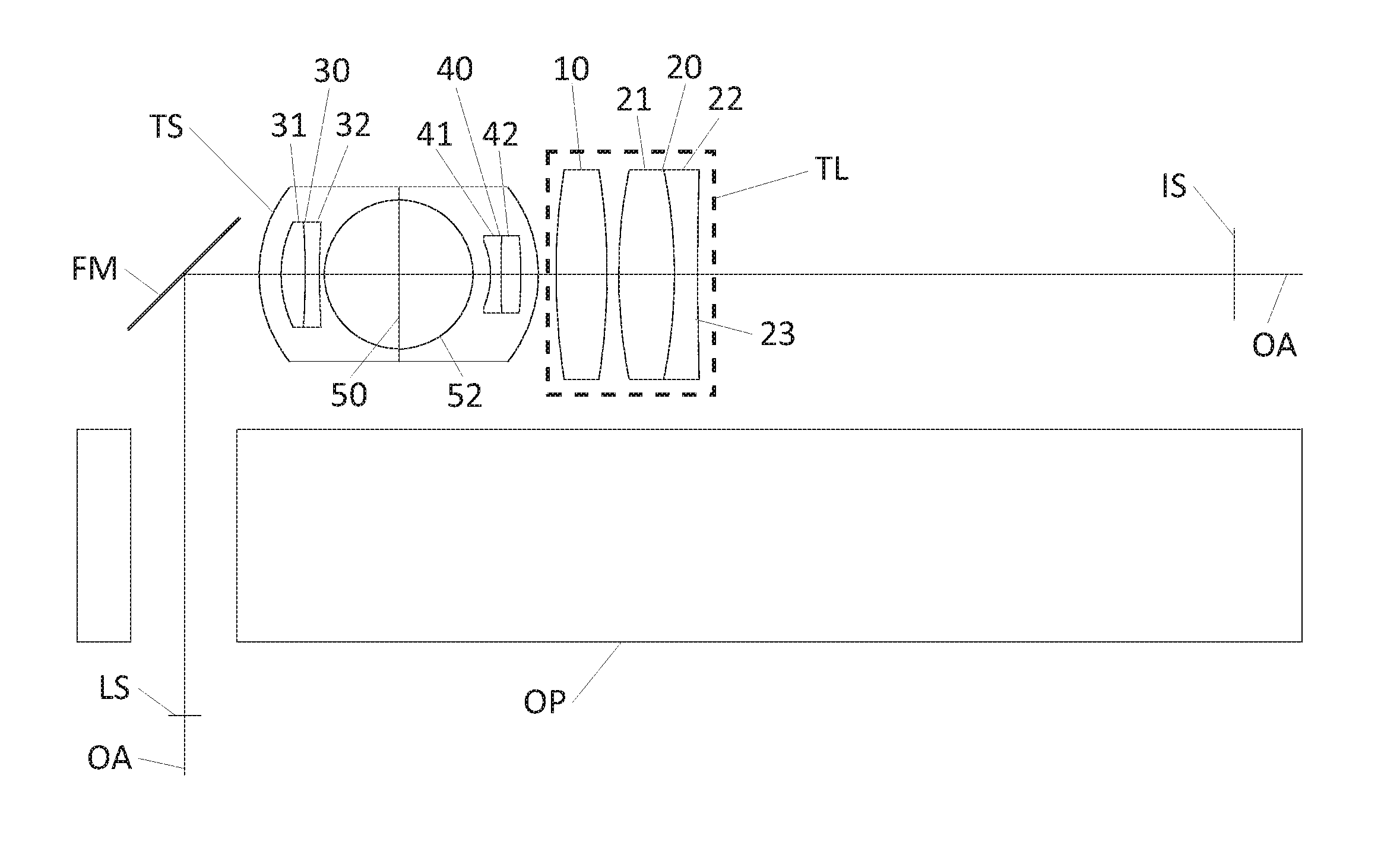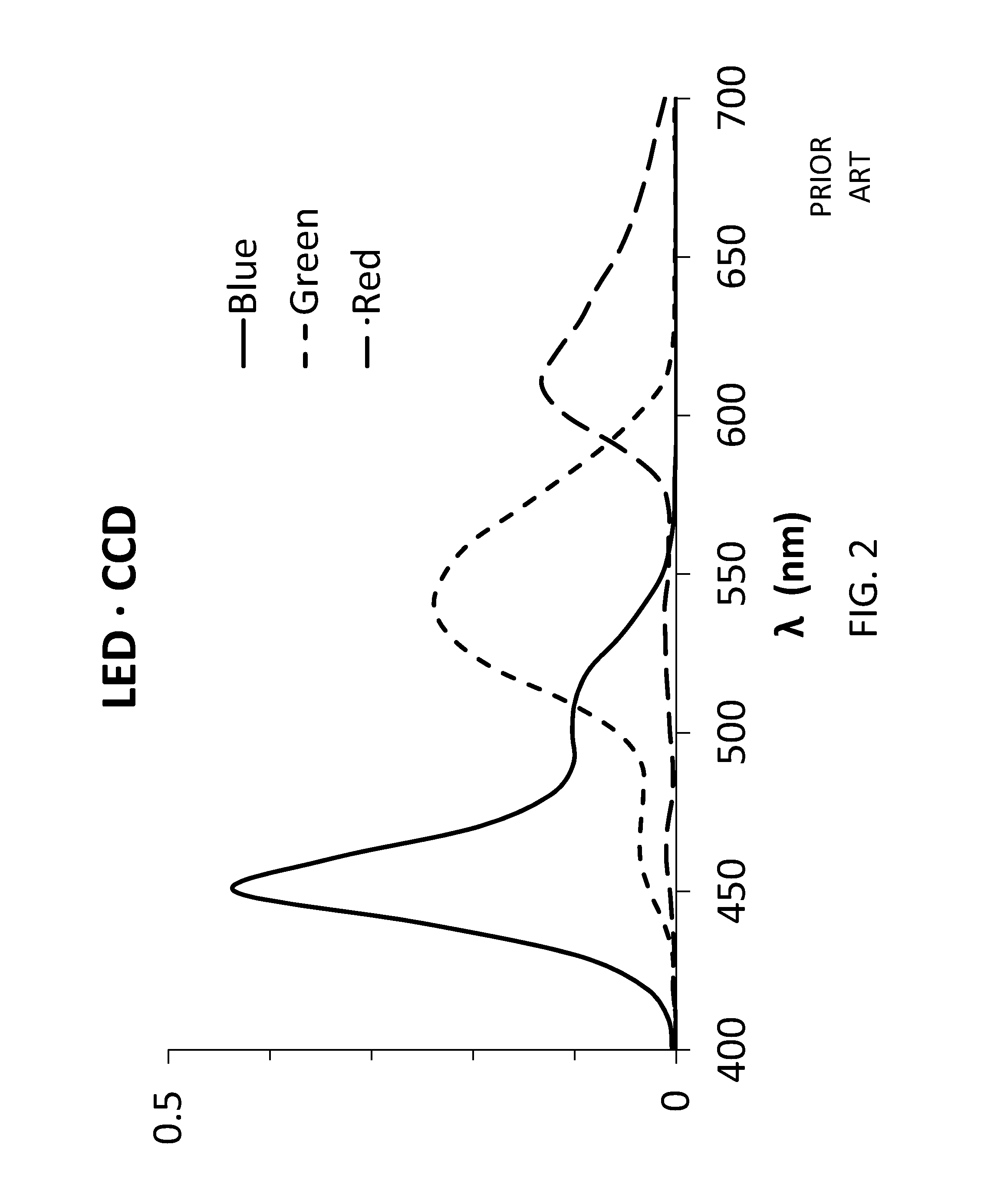Tube lens with long front tube length within optical system for digital pathology
a technology of optical system and tube lens, applied in the field of digital pathology, can solve the problems of increasing the cost of both materials, increasing the cost of processing, and poor spatial resolution of human vision at blue wavelength, and achieves the effects of increasing the demand for lateral color, increasing the cost of manufacturing, and increasing the cost of processing
- Summary
- Abstract
- Description
- Claims
- Application Information
AI Technical Summary
Benefits of technology
Problems solved by technology
Method used
Image
Examples
first embodiment
[0112]The front tube length of the first embodiment is approximately 1.3 times the effective focal length of the tube lens TL. The front tube length is deemed a long front tube length at values greater than 1.0 the effective focal length. Above 1.5 times the effective focal length, a long front tube length creates lateral color beyond the correction of this embodiment. Thus, a long front tube length is defined as 1.0 to 1.5 times the effective focal length for this embodiment.
[0113]The image field of the embodiment of FIG. 6A is 4.0°. The image field is defined by a 25 mm diagonal of the image sensor IS and an effective focal length at 180 mm. At 4.0° in field angle, long crown CAF2 is required for correction of lateral color. The Abbe number of CAF2 is 95.0. At 2.7° in field angle, the long crown N-FK5 is acceptable. The Abbe number of N-FK5 is 70.4. At 2.0° in field angle, the crown silica is not acceptable for correction of lateral color. The Abbe number of silica is 67.8. Thus, ...
third embodiment
[0122]FIGS. 6C, 6D and 6E display the maximum lateral color, the field curvature, and distortion of the tube lens TL of FIG. 6A. The maximum lateral color of the tube lens TL is 2.6 um. The field curvature is less 210 um. At 20× in lateral magnification, the longitudinal magnification at 400× transforms the 210 um of Petzval curvature at the Image sensor IS into 0.5 um at the specimen. The distortion of the third embodiment is 0.48%.
[0123]The prescription of the tube lens TL of FIG. 6A is specified in Table 2 above. The lens stop LS diameter is 9.0 mm. The effective focal length of the tube lens TL is 180 mm. The front tube length is 232.5 mm. The ratio of the front tube length to the effective focal length is 1.29. The front singlet 10 and the front positive element 21 of the back doublet 20 are made of a long crown of crystalline calcium fluoride CAF2. The back negative element 22 of the back doublet 20 is a short flint of amorphous Zr-doped tantalum silicate N-KZFS11. The high Ab...
fourth embodiment
[0146]In a fourth embodiment which is neither claimed nor illustrated, an optical system for digital pathology comprises a Kohler illumination system, an objective lens with lens stop LS, a tube lens TL and a color CCD image sensor IS. The illumination source of the Kohler illumination system is a white LED. The optical system for digital pathology requires a specific combination of glass types, an optimum NA of the objective lens, and a sufficiently large image field. The tube lens includes a long crown and a short flint for accommodation of the white LED and a color CCD sensor. The specific glass types of the objective lens include a long crown and a short flint as essential glass types of an apochromatic or semi-apochromatic objective lens. The NA of the objective lens at 0.50 to 0.55 accommodates the excess cover strata of the tissue specimen. A sufficiently large image field at 2.0° to 4.0° accommodates a typical 20× objective lens. These conditions provide the color correction...
PUM
 Login to View More
Login to View More Abstract
Description
Claims
Application Information
 Login to View More
Login to View More - R&D
- Intellectual Property
- Life Sciences
- Materials
- Tech Scout
- Unparalleled Data Quality
- Higher Quality Content
- 60% Fewer Hallucinations
Browse by: Latest US Patents, China's latest patents, Technical Efficacy Thesaurus, Application Domain, Technology Topic, Popular Technical Reports.
© 2025 PatSnap. All rights reserved.Legal|Privacy policy|Modern Slavery Act Transparency Statement|Sitemap|About US| Contact US: help@patsnap.com



